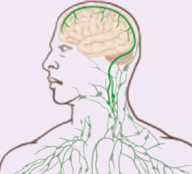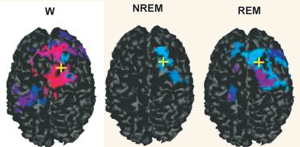Tuesday, 26 July 2016
Greening Cities Are Good for Your Health and Your Spirits

I live on a street east of Lafontaine Park, in Montreal, and I have always thought that if I weren’t “forced” to cross this large park four to eight times per day either walking or on my bike, I would never be able to stand the city and all of its drawbacks (the main reason for which is that there are just too many cars). A study published recently in the open-access journal Scientific Reports seems to confirm this subjective feeling of mine. (more…)
Mental Disorders | Comments Closed
Monday, 11 July 2016
A Vessel Connecting the Immune System to the Brain
 In brain science, as in any other branch of science, you should always be skeptical when you read that a “missing link” has been found and that this discovery will force the textbooks to be rewritten. Such skepticism is all the more appropriate when the discovery is described as something that was there all along and that scientists had simply failed to see. After all, for all intents and purposes, the human body has been regarded as almost completely mapped for some 50 years now.
In brain science, as in any other branch of science, you should always be skeptical when you read that a “missing link” has been found and that this discovery will force the textbooks to be rewritten. Such skepticism is all the more appropriate when the discovery is described as something that was there all along and that scientists had simply failed to see. After all, for all intents and purposes, the human body has been regarded as almost completely mapped for some 50 years now.
But in the case of a recent discovery by Antoine Louveau, a post-doctoral fellow at the University of Virginia School of Medicine, the extravagant claims seem to be true: he has discovered a lymphatic vessel that irrigates the brain, even though any current book on the anatomy of the brain will tell you that it is the only major organ in the body that has no connections to the lymphatic system. (more…)
From the Simple to the Complex | Comments Closed
Monday, 13 June 2016
Conscious Awareness and Integration of Brain Activity: They Go Together

Sometimes the complementarity between certain scientific experiments may not actually prove anything but still points in a fairly obvious direction. And that is the case with a study that was brought to my attention by a reader of this blog (thanks, Pascal R.!) after I published two posts recently on studies of the type of neuronal activity associated with conscious awareness. Before I summarize the study that Pascal told me about, let me remind you about the findings of the two other studies. (more…)
The Emergence of Consciousness | Comments Closed
Tuesday, 10 May 2016
Dynamics of complex networks sheds light on loss of consciousness associated with sleep
 When I read the abstract of the article “Hierarchical clustering of brain activity during human nonrapid eye movement sleep” published by Dr Habib Benali and his team in the April 2012 issue of the journal Proceedings of the National Academy of Sciences of the United States of America (PNAS), I quickly realized that the phenomenon that these authors had observed was pretty much the opposite of the one observed in a study by Douglass Godwin and his team: the temporary breakdown of the brain’s functional networks when an individual becomes aware of a stimulus. (more…)
When I read the abstract of the article “Hierarchical clustering of brain activity during human nonrapid eye movement sleep” published by Dr Habib Benali and his team in the April 2012 issue of the journal Proceedings of the National Academy of Sciences of the United States of America (PNAS), I quickly realized that the phenomenon that these authors had observed was pretty much the opposite of the one observed in a study by Douglass Godwin and his team: the temporary breakdown of the brain’s functional networks when an individual becomes aware of a stimulus. (more…)
Sleep and Dreams | Comments Closed
Thursday, 7 April 2016
Your Personal Identity: An Illusion That Hides A Work in Progress?
 Fascinated by a web page of photos taken with the same family members in the same poses at the same location two or three decades apart (see first link below), I recently suggested to my family that we try the same thing. We took photos of ourselves in the same postures and in the same kitchen as in some old photos that I had from quite a while back. We didn’t go so far as to try to wear clothing similar to what we were wearing in the older photos, but seeing ourselves in such similar situations several decades apart still raised some disturbing questions about the very notion of a personal identity. (more…)
Fascinated by a web page of photos taken with the same family members in the same poses at the same location two or three decades apart (see first link below), I recently suggested to my family that we try the same thing. We took photos of ourselves in the same postures and in the same kitchen as in some old photos that I had from quite a while back. We didn’t go so far as to try to wear clothing similar to what we were wearing in the older photos, but seeing ourselves in such similar situations several decades apart still raised some disturbing questions about the very notion of a personal identity. (more…)
The Emergence of Consciousness | Comments Closed







